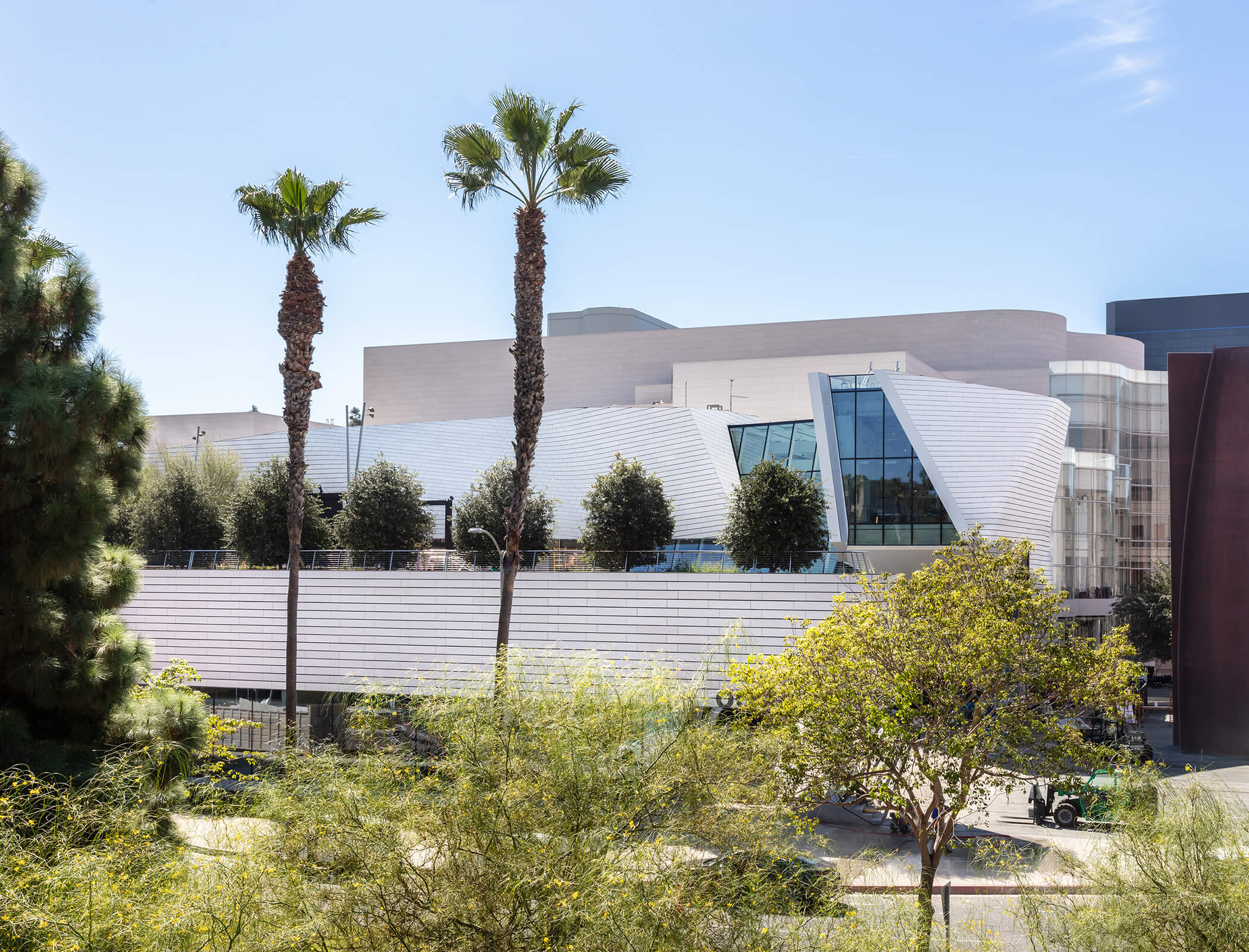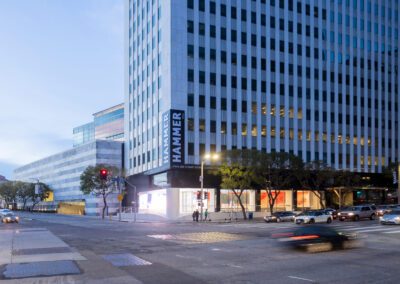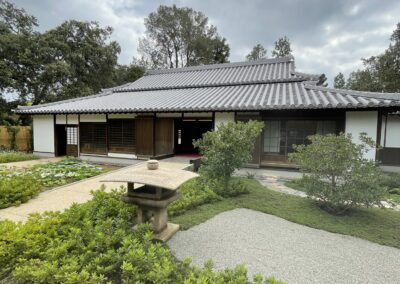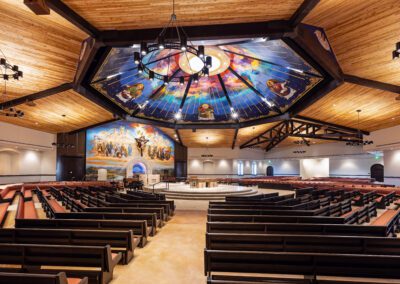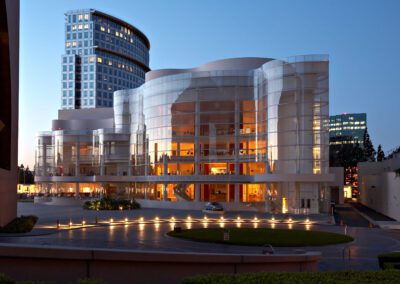Details
- Size: 53,000 square feet
- Completion Date: 2022
Team
- Architect: Morphosis
- Contractor: Clark Construction
Awards
- National Award / Winner: $15 million to $70 million, American Institute of Steel Construction (AISC) IDEAS²
-
Award of Excellence – New Construction, People’s Choice Award, SEAOSC Excellence in Structural Engineering Awards
The Orange County Museum of Art (OCMA) represents the final component of what was envisioned as a multi-disciplinary arts campus for Orange County. Located adjacent to the 3,000-seat Segerstrom Performing Arts Center, the new 53,000 square foot museum will allow OCMA to organize major special exhibitions alongside spacious installations from its collection. The design, which complements and responds to the undulating façade of the neighboring concert hall, supports an indoor-outdoor experience featuring 25,000 square feet of exhibition galleries and an open-air terrace that covers 70% of the museum site.
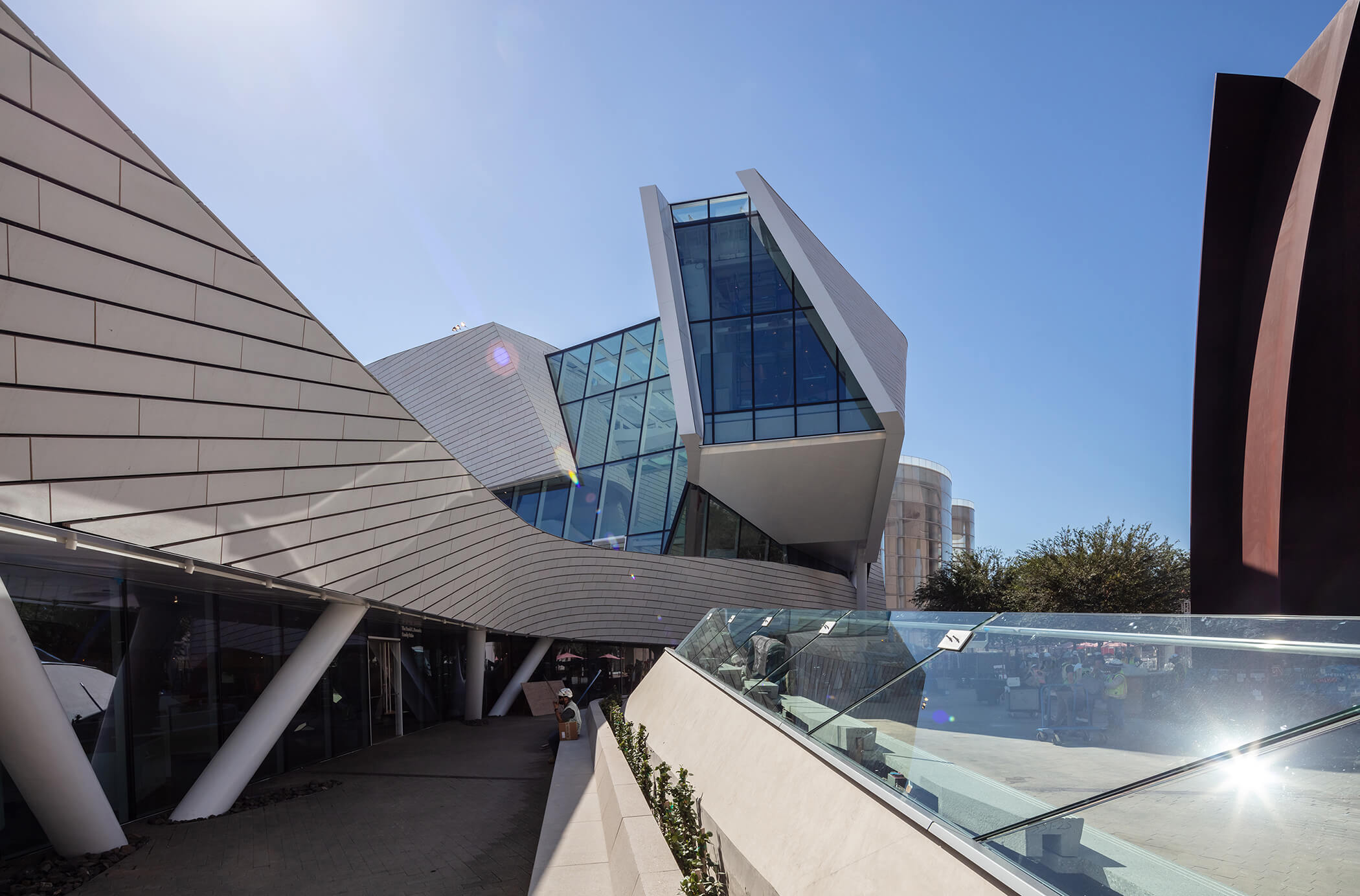
OCMA’s iconic architectural style demanded engineering innovation on multiple levels. Most notable is the unusual geometry of the Museum’s classroom structure. This element is supported via a 36-inch-deep cantilevered truss spanning 68 feet that simultaneously cantilevers and slopes up past the columns all the way to the front of the classroom. The truss is supported on 20-inch diameter sloping columns that work in pairs to resist opposing forces that develop due to its sloped geometry.
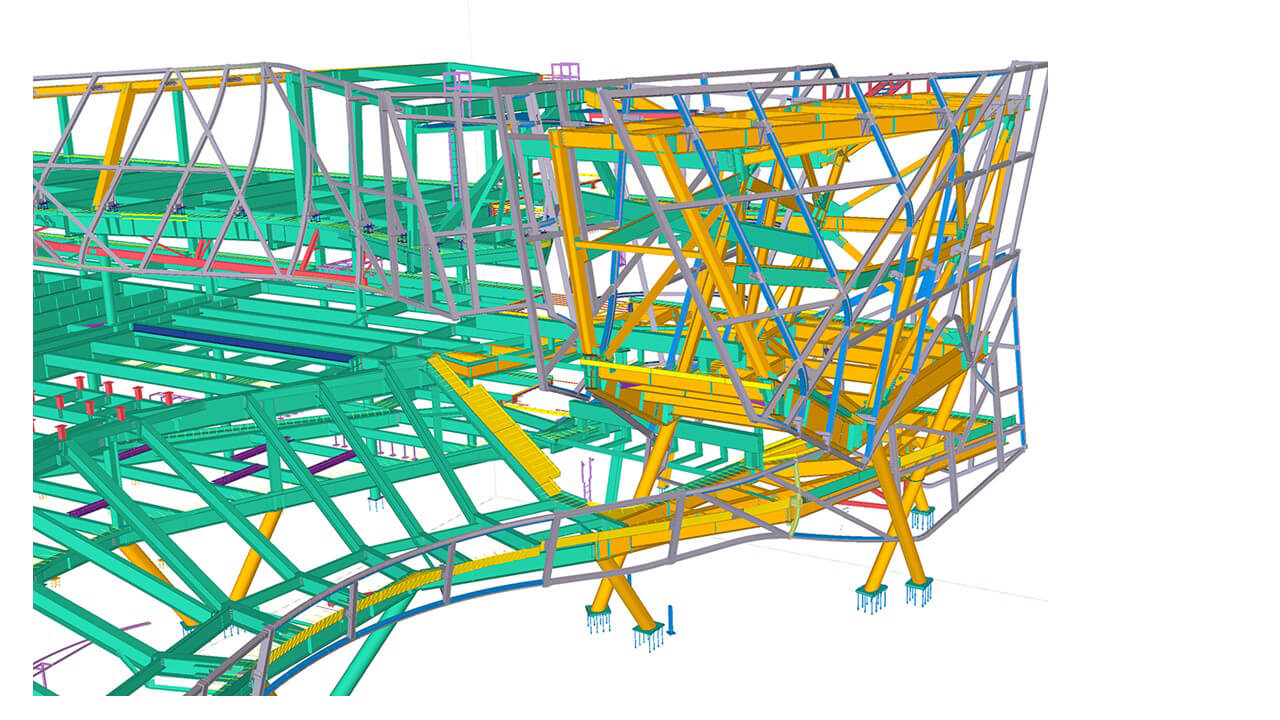
Classroom Building – Tekla Model (above), Construction (right)
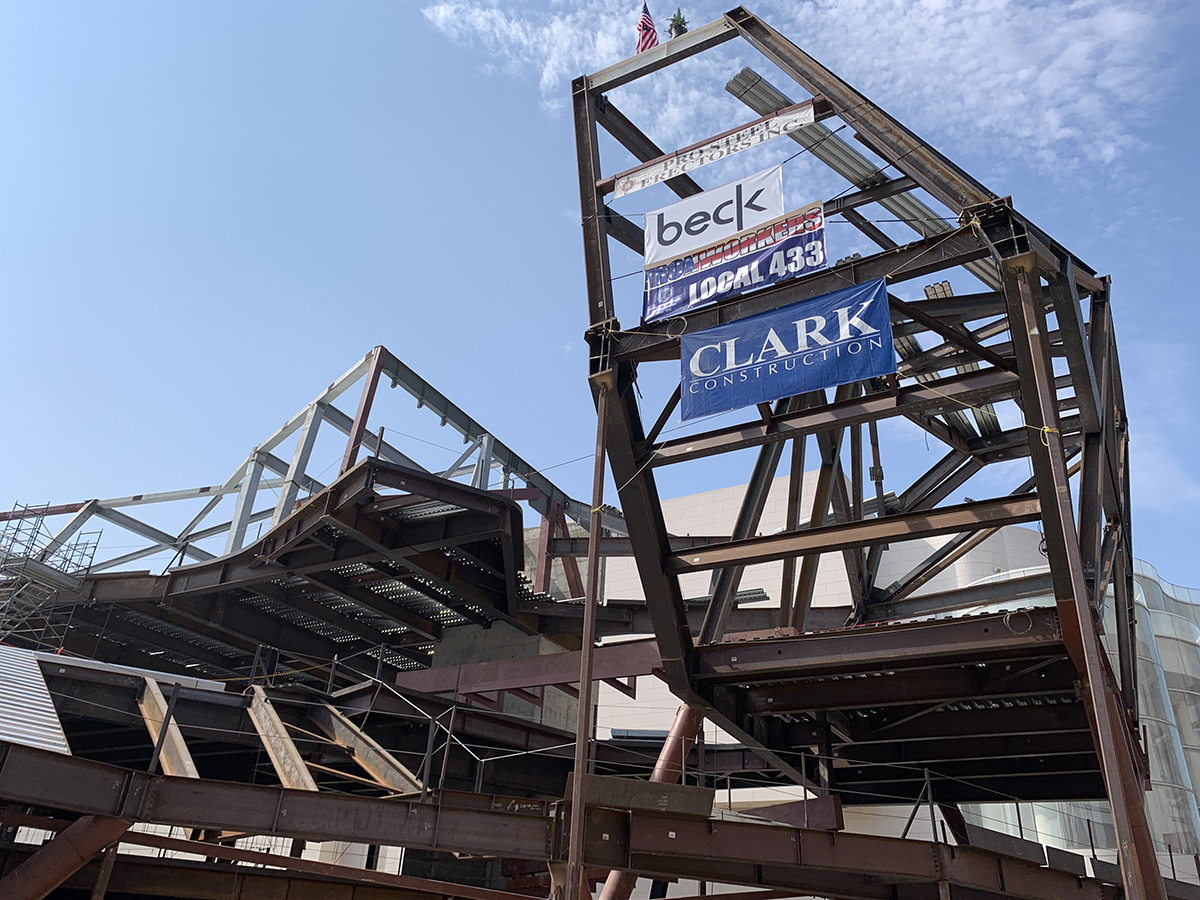
Collectively, the element had a unique shape, sloping walls, special concentric braced frames, full story depth trusses, and a cantilevered east end, which created multiple nodes where many of these elements intersected. Aligning these elements with architectural, MEP and other systems required near constant model integration and coordination with the team. Drafting details created in collaboration with the steel detailer and erector also ensured details were constructible and could be fabricated as intended.

Atrium – Detail, Tekla Model (with red elements representing seismic struts)
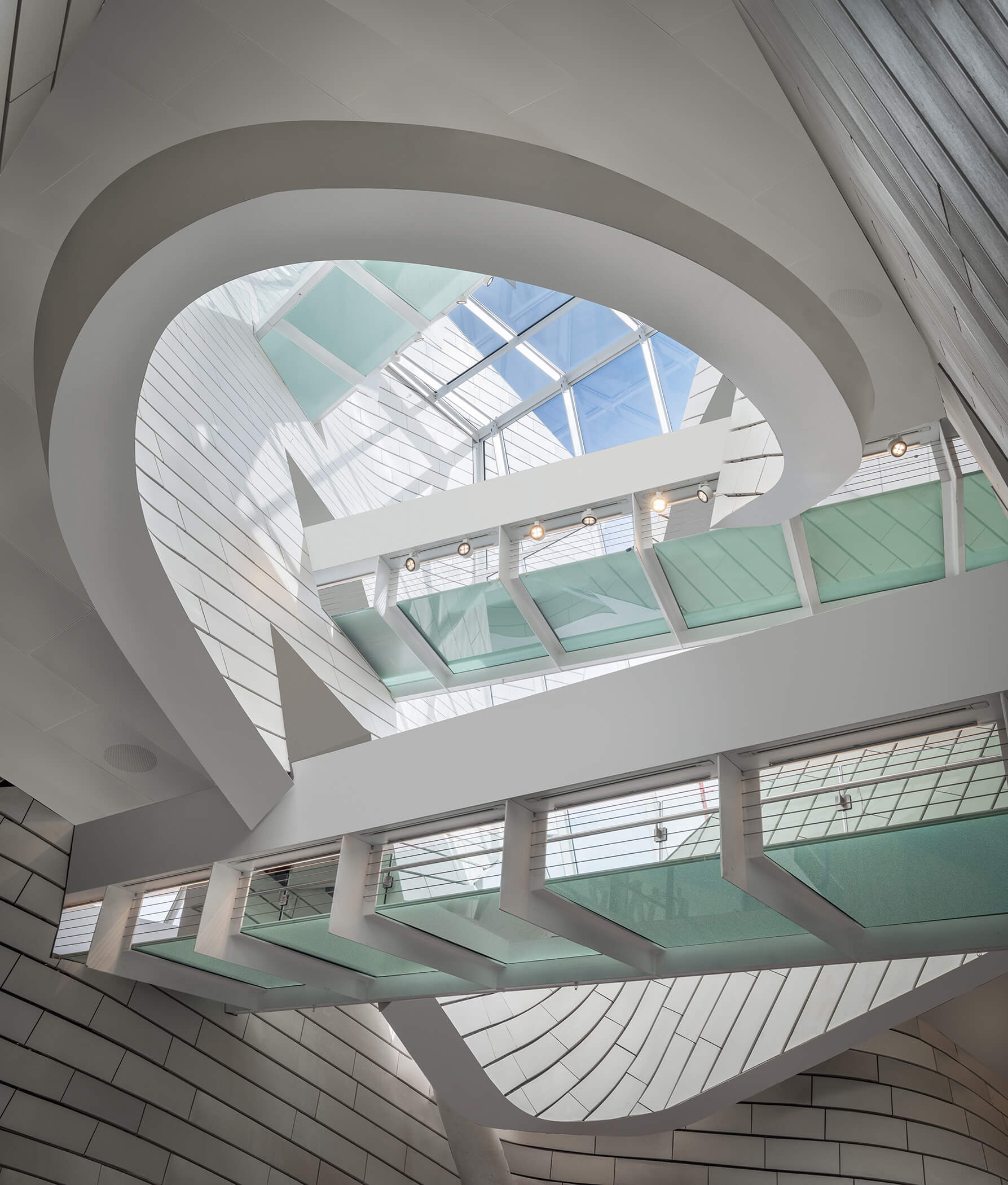
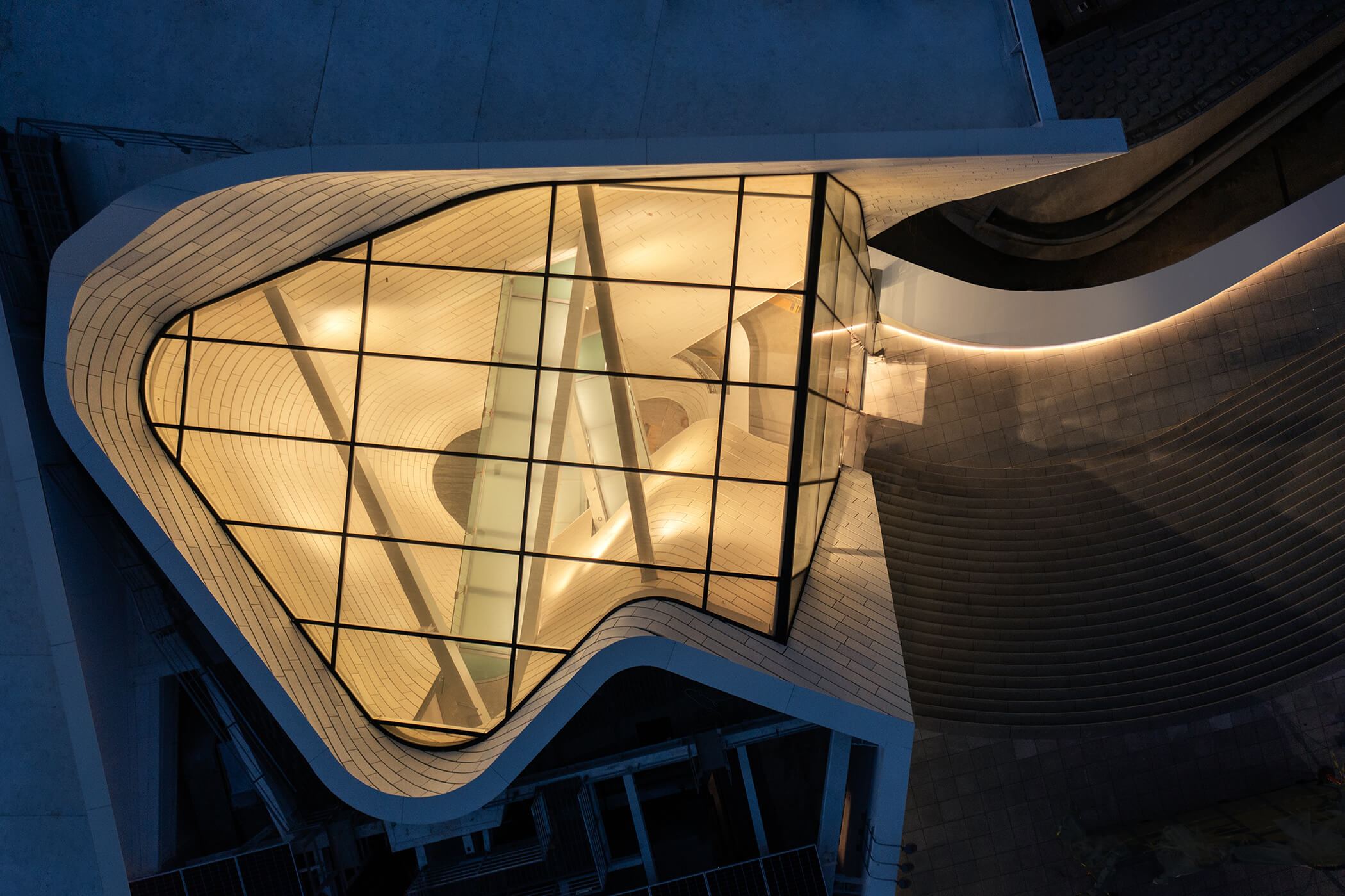
At the outset of the design process, the team developed a BIM execution plan to lock in geometries and collaboratively establish guidelines that allowed the steel design to remain efficient and reduce complexity in detailing. These structural “rules” offered designers the freedom to massage geometries to meet conceptual or aesthetic goals, but they also established reasonable load paths in the structural system to support those elements.

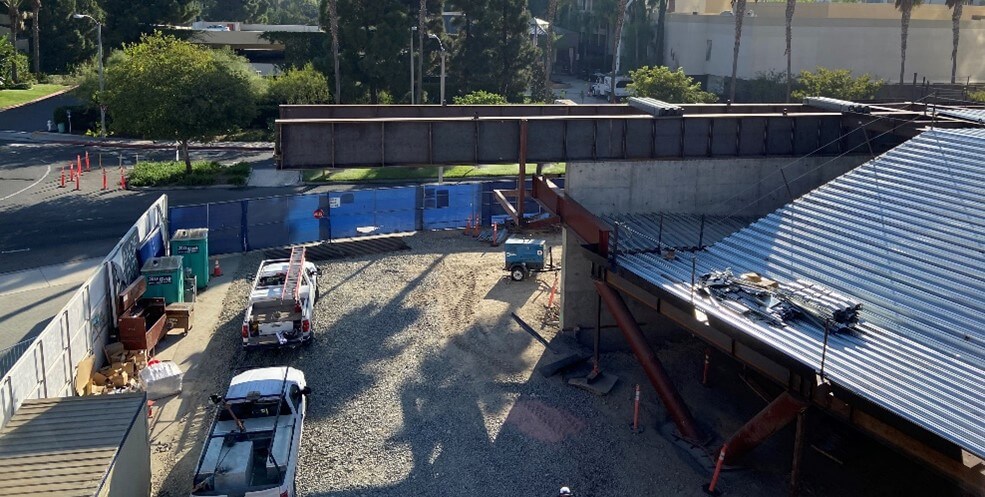
Terrace Cantilever – Tekla Model, Construction
The team utilized sophisticated BIM tools that could be easily translated between different platforms to communicate in an efficient manner. This was highlighted as the project moved from design into construction and design models were combined in a BIM environment with fabrication models. For the review of shop drawings, the structural team would review 3D drawings in Tekla in tandem with 2D drawings to verify conditions. Work points were pulled from the architect’s Rhino model by the engineering team and translated into the fabricator’s Tekla model, ensuring a level of accuracy that eliminated cost overruns due to coordination.
